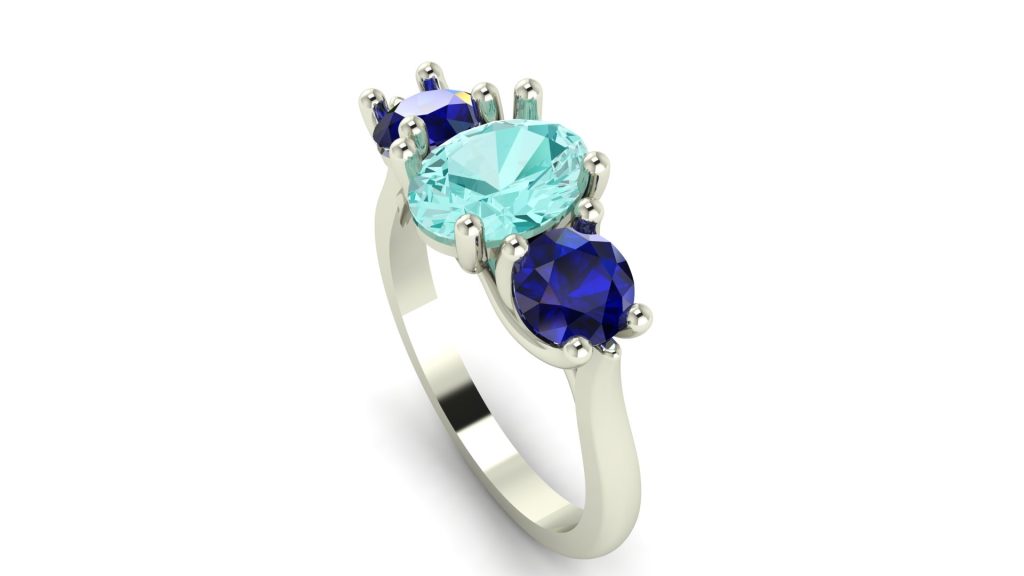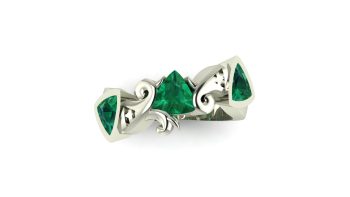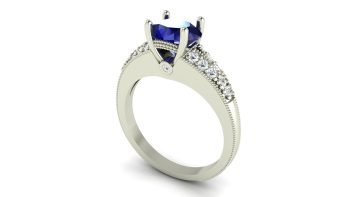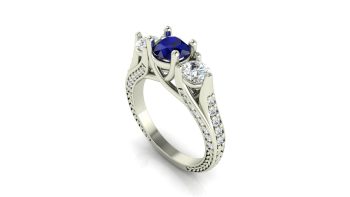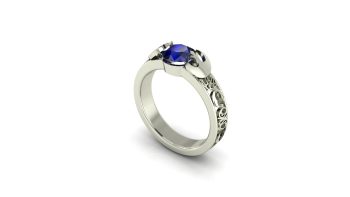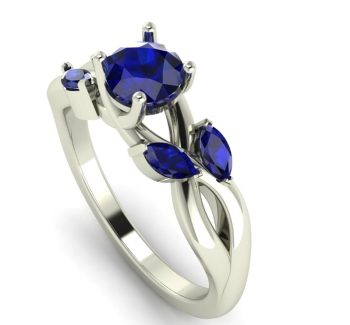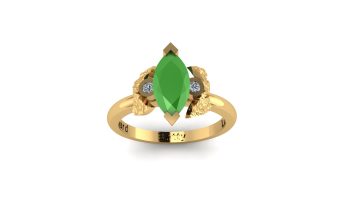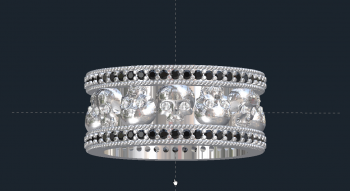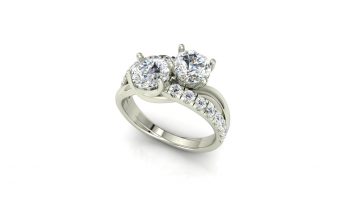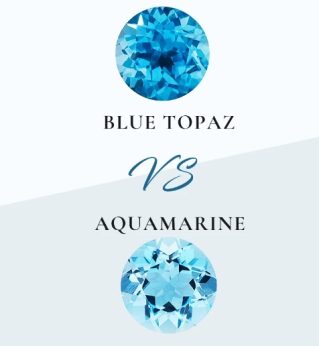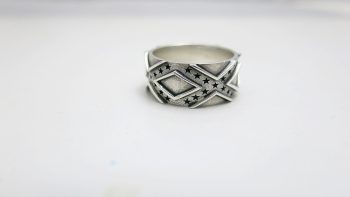Non-Diamond Engagement Rings have always been more popular than you would think. And for a variety of reasons you might not expect either. They were quietly bought without much fanfare. Unfortunately, thanks to DeBeers‘ insanely effective marketing campaigns, there has always been the idea that an engagement ring should be a diamond. At least for the last 75 years. Then, when lab diamonds came out, the idea was that an engagement ring had to have a natural diamond. Lab stones were frowned upon. That idea has gone away though. Lab diamonds are very popular now with major chains now carrying and advertising them.
Now, there is a movement, mainly among younger buyers, to reject diamonds altogether. Many are opting for a moissanite or various colored gemstones. And we applaud them! Despite making tons of diamond engagement rings, we think diamonds are a giant waste of money! We would rather spend that money on our house or a vacation. But that is just us.
Whatever these younger buyer are doing, Non-Diamond Engagement Rings are rapidly growing in popularity. In this post, we will discuss all things Non-Diamond Engagement Rings. After reading this post, you should have a good idea of your plan of attack in avoiding the pitfalls of buying a diamond.
History And Context of Diamond Engagement Rings
Diamond engagement rings have a rich history that dates back centuries. While the tradition of giving rings as a symbol of betrothal can be traced back to ancient times, diamond engagement rings specifically gained popularity in the 20th century. Prior to this, other gemstones such as sapphires and rubies were commonly used. However, it was not until the 1940s that diamond engagement rings became almost mandatory, thanks to a successful marketing campaign by DeBeers. Today, they are widely recognized as a symbol of love and commitment.
Before the rise of diamond engagement rings, different cultures had their own customs when it came to betrothal. In ancient Rome, for example, iron rings were exchanged to symbolize a legal agreement. In the Middle Ages, rings with inscriptions were given as a sign of love and fidelity. However, it was not until the late 19th century that diamonds began to be associated with engagement rings.
The shift towards diamond engagement rings becoming almost mandatory can be attributed to a clever marketing campaign by De Beers, a diamond mining company. In the 1940s, they launched the famous slogan “A Diamond is Forever,” emphasizing the everlasting nature of diamonds and their significance in a marriage. This campaign successfully positioned diamond engagement rings as a symbol of love and commitment, and it quickly became the norm in Western societies.
The Trend Towards Non-Diamond Engagement Rings
In recent years, there has been a noticeable shift in the world of engagement rings. More and more individuals are opting for non-diamond options when it comes to symbolizing their love and commitment. This trend towards non-diamond engagement rings has gained popularity for a variety of reasons, including personal preferences, ethical concerns, and budget considerations.
One of the main factors driving the rise of non-diamond engagement rings is the desire for a unique and personalized symbol of love. Many individuals are seeking alternatives to traditional diamond rings in order to express their individuality and stand out from the crowd. From gemstones like sapphires, emeralds, and rubies, to unconventional materials like wood or even recycled metals, the options are endless when it comes to choosing a non-diamond engagement ring that reflects one’s personal style and taste.
Additionally, ethical concerns have played a significant role in the shift towards non-diamond engagement rings. The diamond industry has long been associated with issues such as conflict diamonds, environmental damage, and unfair labor practices. As a result, many couples are consciously choosing to avoid diamonds and instead opt for ethically sourced gemstones or alternative materials that align with their values and beliefs.
Lastly, budget considerations have also contributed to the popularity of a non-diamond engagement ring. Diamonds are traditionally known for their high price tags, making them unattainable for some couples. Non-diamond options, on the other hand, can offer more affordable alternatives without compromising on style or quality. Whether it’s a colorful gemstone or a unique design, a non-diamond engagement ring can be a budget-friendly option for those looking to save money without sacrificing the significance of their commitment.
Is It Ok To Have A Non-Diamond Engagement Ring?
Absolutely. While diamonds have long been the go-to choice for engagement rings, many couples are now opting for alternative gemstones that better reflect their personal style and preferences. Non-diamond engagement rings offer a unique and meaningful way to express your love and commitment. Whether you choose a sapphire, emerald, ruby, or any other gemstone, the most important thing is that the ring symbolizes your love and commitment to each other.
It is important to note that the decision to choose a non-diamond engagement ring is a personal one, and there is no right or wrong choice. Do not worry about what others might think. This is your ring. Ultimately, what matters most is that the ring represents your love and commitment to each other. Whether you choose a diamond or a non-diamond gemstone, what truly matters is the love and dedication that the ring symbolizes. So, if a non-diamond engagement ring speaks to you and your partner, go ahead and embrace it with confidence.
Reasons For Considering A Non-Diamond Engagement Ring
Uniqueness
Non-diamond engagement rings offer a unique alternative to the traditional diamond ring. These rings are becoming increasingly popular among couples who want to express their individuality and personal style. With a wide variety of gemstones and alternative materials to choose from, a non-diamond engagement ring allow couples to create a ring that truly reflects their unique love story.
Furthermore, a non-diamond engagement ring allow couples to embrace their personal style and make a statement. From vintage-inspired designs to modern and minimalist styles, there is a non-diamond ring to suit every taste. Couples can choose a gemstone that holds a special meaning to them. This can be their birthstone or a gemstone that symbolizes a significant moment in their relationship.
More Ethical
With many couples are choosing alternative gemstones or even non-traditional materials for their engagement rings. Their a shift in preference raises questions about the ethics surrounding the diamond industry.
One of the main concerns is the issue of conflict diamonds, also known as blood diamonds. These are diamonds that are mined in war zones and sold to finance armed conflict against governments. By opting for a non-diamond engagement ring, individuals can avoid supporting this unethical trade.
Another ethical consideration is the environmental impact of diamond mining. The process of extracting diamonds from the earth can cause significant damage to ecosystems. This includes deforestation, soil erosion, and water pollution. Choosing a non-diamond ring can help minimize these negative effects and promote more sustainable practices.
Affordability
One of the main advantages of a non-diamond engagement ring is their affordability. While diamonds are known for their high price tags, non-diamond options provide a more budget-friendly alternative. Gemstones like sapphires and rubies offer vibrant colors and unique beauty at a fraction of the cost. For those who prefer the look of a diamond, moissanite and cubic zirconia provide stunning alternatives that are virtually indistinguishable to the untrained eye. By choosing a non-diamond engagement ring, couples can save money without sacrificing style or quality.
The affordability of a non-diamond engagement ring also allows couples to allocate their budget towards other important aspects of their wedding or future together. Whether it’s saving for a down payment on a house, planning a dream honeymoon, or starting a family. The financial flexibility provided by a non-diamond ring can be a game-changer. By opting for a more affordable engagement ring, couples can invest in their future and create lasting memories beyond the initial proposal.
Disadvantages Of A Non-Diamond Engagement Ring
There are several disadvantages to consider when choosing a non-diamond engagement ring. Firstly, non-diamond gemstones may not have the same durability as diamonds, making them more prone to scratches and chips over time. Additionally, a non-diamond engagement ring may not hold their value as well as diamond rings, which can be an important factor if you plan on reselling or upgrading your ring in the future. Lastly, non-diamond rings may not have the same cultural significance or traditional symbolism as diamond rings, which could be a consideration for those who value these aspects. Overall, it is important to weigh these disadvantages against personal preferences and budget when making a decision about an engagement ring.
Most Popular Types Of Gemstones That Aren’t Diamonds
Gemstones are a fascinating category of minerals that have captivated humans for centuries. While diamonds may be the most well-known gemstone, there are many other types that are equally beautiful and sought after. Let’s explore some of the most popular gemstones that aren’t diamonds.
One popular gemstone is the sapphire, which is known for its stunning blue color. Sapphires are a variety of the mineral corundum and can also be found in other colors such as pink, yellow, and green. They are highly valued for their durability and brilliance, making them a popular choice for engagement rings and other jewelry.
Another popular gemstone is the emerald, which is prized for its vibrant green color. Emeralds are a type of beryl and are known for their unique inclusions, which are often referred to as “jardin,” meaning garden in French. These inclusions give each emerald its own character and make it truly one-of-a-kind.
Lastly, we have the ruby, which is known for its deep red color. Rubies are also a variety of corundum and are considered one of the most valuable gemstones. They have been treasured throughout history and are often associated with passion and love.
However, those are the usual suspects. We love to make engagement rings with all kinds of stones. They do not need to be precious gems either. We have created numerous engagement rings with semi-precious stones. Stones like aquamarine, tourmaline, or spinel all make great choices.
Celebrities Who Wear Non-Diamond Engagement Rings
When it comes to engagement rings, diamonds have long been the go-to choice for many couples. However, there is a growing trend among celebrities to opt for a non-diamond engagement ring. These unique and stunning rings showcase a variety of gemstones that offer a refreshing alternative to the traditional diamond. Let’s take a look at some famous celebrities who have embraced this trend and chosen a non-diamond engagement ring.
One celebrity who made headlines with her non-diamond engagement ring is Kate Middleton, the Duchess of Cambridge. Her ring features a stunning blue sapphire surrounded by a halo of diamonds. This ring, which originally belonged to Princess Diana, has become an iconic symbol of love and royalty.
Another celebrity who chose a non-diamond engagement ring is Jessica Simpson. Her ring features a beautiful ruby center stone surrounded by diamonds. This vibrant and eye-catching ring perfectly reflects Jessica’s bold and unique style.
Lastly, we have Olivia Wilde, who opted for an emerald engagement ring. This stunning green gemstone is set in a vintage-inspired design and is a perfect match for Olivia’s bohemian chic style.
What If My Spouse Wants a Diamond, But I Have Reservations Or Can’t Afford A Diamond
When faced with the situation where your spouse wants a diamond but you have reservations or can’t afford one, it’s important to approach the conversation with understanding and open communication. Begin by expressing your concerns and reservations about purchasing a diamond, emphasizing that your intention is to find a solution that works for both of you. Explore alternative options such as gemstones or alternative materials that can still symbolize your commitment and love. Additionally, consider discussing your financial situation openly and honestly, suggesting alternative ways to allocate funds towards experiences or investments that hold meaning for both of you. Ultimately, the key is to approach the conversation with empathy and a willingness to find a compromise that aligns with both your values and financial circumstances.
The Bottom Line
Non-diamond engagement rings can be just as beautiful and meaningful as diamond rings. Maybe even more so. The sentiment behind an engagement ring lies in the love and commitment it represents, rather than the specific gemstone or material used. Non-diamond rings can be customized and designed to symbolize the unique bond between a couple, making them a truly special and cherished piece of jewelry.
That said. We create custom jewelry for each customer from the ground up. That means your ring is made to order to your specs. Don’t want a diamond? No problem. We can use almost any stone you want. Why bother with mass produced engagement rings when we can create a non-diamond engagement ring showing your style and personality?
Click here to see all of our custom engagement rings. If you don’t see anything you like or can modify to your taste, send us your idea. We will see what we can do for you.
